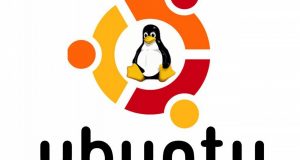Jim Hill Issue #35, March 1997 Does setting up UUCP scare the hell out of you? No more! Read on. Discovering the Internet in a college environment, I was always very casual about the time I spent on-line. Since I didn’t get a direct bill from the university, there was no reason to keep track of it. All that changed ...
Read More »Blog Page
NEdit
Dan Wilder Issue #35, March 1997 NEdit is something new in a Linux programmer’s editor. Here is something new. Not vi, not emacs, not just a wrapper for some hackneyed old Motif widget. With a sparse but sufficient keyboard command set and full regular expression substitutions, NEdit has the best mouse integration I’ve seen yet in a Linux editor, free ...
Read More »A Guide to Virtual Services
Chad Robinson Issue #35, March 1997 In this Part 1 of 2, see how to have a single machine answer connections to multiple IP addresses and respond differently for each. This installment covers WWW services. As Internet sites grow in number, some clients want to create a presence without dedicating a machine to the task. In many cases, a client ...
Read More »The Death of Xenix
Evan Leibovitch Issue #35, March 1997 By the time you read this, the SCO in “SCO Xenix” will stand for “Software Considered Obsolete”. Is there an opportunity here? As of January 1, 1996 the Santa Cruz Operation (SCO) streamlined its product offerings by dropping a number of older releases from its lineup. Until last December 31, you could still buy ...
Read More »Using the I2C Bus with Linux
Simon G Issue #35, March 1997 Originally designed for controlling consumer electronics, the I2C bus is easily adapted to working with Linux to control a variety of devices using the I2C bus standard. The I2C bus is a two-wire serial bus for connecting a wide range of ICs to a computer or micro-controller. It was originally developed by Phillips in ...
Read More »AMD—AutoMount Daemon
Matthew Crosby Issue #35, March 1997 Here’s a way to make system administration easier when dealing with NFS. The standard protocol for sharing files between Linux boxes is the Network File System (NFS). This protocol, which originated with Sun in the mid 80s, does the job, but it has many deficiencies that can cause trouble for a systems administrator. Though ...
Read More »Linux Support – Decreasing Partition Size
Various Issue #34, February 1997 Our experts answer your technical questions. Decreasing Partition Size I recently got a new PC with Windows 95 installed. With my old PC I used FIPS to decrease the size of the DOS partition and then used Linux FDISK to create Linux partitions. Windows 95 uses VFAT. Do you know of a utility or product ...
Read More »Watchdog—The Linux Software Daemon
Michael Meskes Issue #34, February 1997 Here’s a program that will watch your computer for those nasty system hang ups and reboot it as needed in your absence. Starting with version 1.3.51 the Linux kernel provides a watchdog driver. Not only does it take care of hardware watchdogs, but it also implements a software watchdog. It was created by Alan ...
Read More »Graphing with lout
Michael Hall Issue #34, February 1997 A document layout language, lout can also be used to generate graphs in PostScript. Most documentation tools can also make graphs. This article will show you how to use lout, a document layout language, to create graphs. At the end we will have a script which creates a history graph of system activity. First ...
Read More »XBanner: Making XDM More Attractive
Amit Margalit Issue #34, February 1997 XBanner turns your boring, staid XDM login screen into one of those cool things you’ll want to show all your friends (nonchalantly, of course). XBanner was invented and designed from the beginning to serve one purpose—to beautify the login screen XDM usually generates. This beautification is accomplished by drawing a piece of text in ...
Read More » Linux, Linux OS, Free Linux Operating System, Linux India Linux, Linux OS,Free Linux Operating System,Linux India supports Linux users in India, Free Software on Linux OS, Linux India helps to growth Linux OS in India
Linux, Linux OS, Free Linux Operating System, Linux India Linux, Linux OS,Free Linux Operating System,Linux India supports Linux users in India, Free Software on Linux OS, Linux India helps to growth Linux OS in India
